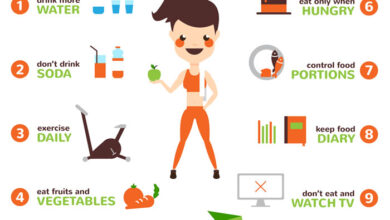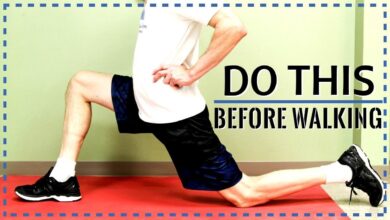
What Podiatrists Want You to Know About Walking
What podiatrists want you to know about walking is that it’s not just about putting one foot in front of the other. It’s a complex activity that involves a symphony of muscles, bones, and joints working together. Walking is the foundation of many activities, from simply getting around to enjoying a brisk walk in the park.
But, improper technique and poor footwear choices can lead to a whole host of foot problems. This guide will help you understand the mechanics of walking, choose the right shoes, and learn how to walk safely and comfortably.
From the biomechanics of walking to the importance of proper footwear, we’ll cover all the essential aspects of walking that can impact your foot health. We’ll also discuss common walking-related foot problems and how to prevent them, as well as the unique challenges that come with aging and walking.
Choosing the Right Footwear
Walking is a fantastic way to stay active and improve your overall health, but it’s crucial to choose the right footwear to support your feet and prevent injuries. Your shoes are the foundation for your walking experience, so investing in a good pair is essential.
Understanding Foot Type
Your foot type plays a significant role in determining the best shoes for you. There are three main types:
- High arches: These feet have a high arch, resulting in a smaller contact area with the ground. Shoes with good arch support and cushioning are recommended to provide stability and comfort.
- Low arches: These feet have a flat arch, leading to a larger contact area with the ground. Shoes with good arch support and stability features are important to prevent overpronation, which is the inward rolling of the foot during walking.
- Neutral arches: These feet have a balanced arch, allowing for a smooth transition from heel to toe. Shoes with good cushioning and flexibility are suitable for neutral arches.
Measuring Your Feet
To ensure a proper fit, it’s essential to measure your feet accurately. Here’s how:
- Stand on a hard surface: Ensure you’re standing straight with your weight evenly distributed.
- Measure both feet: It’s common for one foot to be slightly larger than the other. Measure both feet and use the larger measurement.
- Measure at the end of the day: Your feet tend to swell throughout the day, so measuring at the end of the day ensures a comfortable fit.
- Use a measuring tape: Place the tape measure against the wall and measure from the heel to the longest toe.
Shoe Features for Walking
- Cushioning: Cushioning is crucial for absorbing impact and reducing stress on your joints, particularly your knees and ankles. Look for shoes with thick midsoles made of materials like EVA foam or gel.
- Arch support: Arch support helps to maintain the natural alignment of your foot, providing stability and reducing strain on your muscles and tendons. Look for shoes with a supportive insole or a built-in arch support.
- Breathability: Breathable shoes are essential for keeping your feet cool and dry, especially during long walks. Look for shoes with mesh panels or other breathable materials.
- Flexibility: Shoes should be flexible enough to allow for a natural range of motion in your foot. Look for shoes with a flexible outsole and a soft upper.
- Toe box: The toe box should be wide enough to allow your toes to move freely. Avoid shoes with a narrow toe box, as this can lead to discomfort and potential problems like bunions.
Walking for Fitness and Health
Walking is an excellent form of exercise that offers numerous benefits for your physical and mental well-being. It’s a low-impact activity that is accessible to people of all ages and fitness levels. Walking can be easily incorporated into your daily routine, making it a convenient way to improve your overall health.
Cardiovascular Health Benefits
Regular walking has a positive impact on your cardiovascular health. It strengthens your heart and lungs, improving blood circulation and reducing the risk of heart disease, stroke, and other cardiovascular conditions. Walking helps lower blood pressure, improves cholesterol levels, and increases your body’s ability to utilize oxygen.
Weight Management
Walking is an effective way to manage your weight and burn calories. The number of calories you burn depends on your weight, walking speed, and the duration of your walk. For example, a 150-pound person walking at a moderate pace for 30 minutes burns approximately 150 calories.
Walking can also help prevent weight gain by increasing your daily calorie expenditure.
Mental Well-being
Walking has a positive impact on mental health. It can reduce stress, improve mood, and enhance cognitive function. Walking outdoors exposes you to sunlight, which can increase your serotonin levels, a neurotransmitter associated with happiness. The rhythmic motion of walking can also be meditative, providing a sense of calm and relaxation.
Incorporating Walking into a Fitness Routine
To reap the full benefits of walking, it’s important to incorporate it into a regular fitness routine. Here are some recommendations for duration, intensity, and frequency:
Duration
Aim for at least 30 minutes of moderate-intensity walking most days of the week. You can break this down into shorter sessions, such as 10 minutes three times a day.
Intensity
Moderate-intensity walking is defined as a pace that makes you slightly out of breath and causes a light sweat. You should be able to hold a conversation while walking at this intensity.
Frequency
It’s recommended to walk at least 5 days a week for optimal health benefits.
Staying Motivated and Preventing Injuries
Here are some tips for staying motivated and preventing injuries while walking for exercise:
Staying Motivated
Set realistic goals Start with a short walking distance and gradually increase it over time.
Find a walking buddy Walking with a friend or family member can make it more enjoyable and help you stay accountable.
Vary your walking route Explore different neighborhoods or parks to keep things interesting.
Listen to music or podcasts Use music or podcasts to distract yourself and make your walks more enjoyable.
Preventing Injuries
Warm up before walking Start with a few minutes of light stretching or walking at a slower pace.
Wear supportive shoes Choose shoes designed for walking that provide good cushioning and support.
Maintain good posture Keep your back straight and shoulders relaxed.
Listen to your body
Podiatrists emphasize the importance of proper walking technique, ensuring your feet are aligned and your steps are controlled. This can be a great way to rediscover lost healthy habits, especially if you’ve been leading a more sedentary lifestyle. Ways to rediscover lost healthy habits often involve incorporating simple activities like walking into your routine.
By focusing on your gait, you can improve your overall health and prevent foot pain and injuries.
Podiatrists emphasize the importance of proper footwear and walking technique for foot health. While you’re out and about, don’t feel guilty about indulging in a delicious pizza every now and then, especially if you opt for one of the 11 healthy pizzas under 400 calories that are out there.
Remember, a healthy lifestyle includes balanced choices, and that includes enjoying your favorite foods in moderation, while still prioritizing proper foot care for a comfortable and active life.
Cool down after walking Finish your walk with a few minutes of light stretching.
Common Walking-Related Foot Problems

Walking is a fantastic activity for overall health and well-being, but it can also put stress on your feet, leading to various foot problems. Understanding these issues and how to prevent them can help you enjoy walking without pain or discomfort.
Plantar Fasciitis
Plantar fasciitis is a common condition characterized by pain in the heel and arch of the foot. The plantar fascia, a thick band of tissue that runs along the bottom of your foot, becomes inflamed, causing pain and stiffness.
- Causes:Overuse, high-impact activities, tight calf muscles, improper footwear, obesity, and flat feet can contribute to plantar fasciitis.
- Prevention:Wear supportive shoes with good arch support, stretch your calf muscles and plantar fascia regularly, lose weight if overweight, and avoid activities that aggravate your pain.
- Treatment:Rest, ice, compression, and elevation (RICE) are initial treatment options. Over-the-counter pain relievers, arch supports, and custom orthotics can provide relief. Stretching exercises, such as toe curls and calf stretches, can help improve flexibility. In severe cases, physical therapy or corticosteroid injections may be recommended.
If pain persists, consulting a podiatrist is crucial.
Heel Spurs, What podiatrists want you to know about walking
A heel spur is a bony growth on the heel bone, often associated with plantar fasciitis. While not always painful, heel spurs can cause sharp pain when walking or standing for extended periods.
Podiatrists emphasize the importance of proper footwear and gait for healthy walking. While we’re on the topic of healthy habits, it’s also crucial to avoid common thinking traps to avoid when trying to lose weight like all-or-nothing thinking or comparing yourself to others.
These mental hurdles can derail your progress. Remember, walking is a fantastic way to improve your overall health and well-being, so prioritize comfortable shoes and a mindful approach!
- Causes:Heel spurs are often caused by repeated strain on the plantar fascia, leading to bone growth. Tight calf muscles, high-impact activities, and improper footwear can contribute to their development.
- Prevention:Similar preventive measures as for plantar fasciitis, including wearing supportive shoes with good arch support, stretching, and avoiding activities that aggravate pain, are recommended.
- Treatment:Treatment for heel spurs focuses on reducing pain and inflammation. RICE, over-the-counter pain relievers, and arch supports can help. In some cases, corticosteroid injections or surgery may be considered.
Achilles Tendonitis
Achilles tendonitis is an inflammation of the Achilles tendon, the thick tendon that connects the calf muscles to the heel bone. It can cause pain and stiffness in the back of the heel, especially during physical activity.
- Causes:Overuse, sudden increase in activity, tight calf muscles, improper footwear, and age can all contribute to Achilles tendonitis.
- Prevention:Gradual increase in activity, proper warm-up and cool-down routines, stretching, and wearing supportive shoes with good heel cushioning are essential for prevention.
- Treatment:RICE, over-the-counter pain relievers, and physical therapy can help manage Achilles tendonitis. Rest is crucial, and gradually increasing activity levels is recommended. In severe cases, corticosteroid injections or surgery may be necessary.
Walking and Foot Health Over Time: What Podiatrists Want You To Know About Walking
As we age, our bodies undergo natural changes, and our feet are no exception. These changes can impact our ability to walk comfortably and safely, making it crucial to understand how aging affects foot health and take steps to maintain optimal walking ability.
Age-Related Foot Changes and Their Impact on Walking
The aging process brings about various changes in our feet, influencing our walking experience. These changes include:
- Loss of Fat Pads:The fat pads on the soles of our feet naturally thin with age, reducing cushioning and increasing pressure on bones and joints. This can lead to discomfort, pain, and difficulty walking long distances.
- Decreased Flexibility:The ligaments and tendons in our feet become less flexible over time, making it harder to bend and move our toes. This can restrict ankle movement and affect our gait.
- Changes in Bone Density:Bone density naturally decreases with age, increasing the risk of fractures. This is particularly true for the bones in the feet, making them more susceptible to injuries from falls or missteps.
- Nail and Skin Changes:Toenails can become thicker and more brittle with age, making them prone to ingrown toenails. The skin on our feet also becomes thinner and drier, making it more susceptible to cuts, sores, and infections.
- Development of Foot Conditions:Certain foot conditions, such as bunions, hammertoes, and plantar fasciitis, become more common with age. These conditions can cause pain, inflammation, and difficulty walking.
Last Recap
Walking is an essential part of a healthy lifestyle, and by understanding the basics of proper walking technique, choosing the right footwear, and addressing any potential foot problems, you can ensure that your feet are happy and healthy for years to come.
So, take a moment to learn more about how to walk well, and reap the benefits of this simple yet powerful activity. Your feet will thank you for it!






